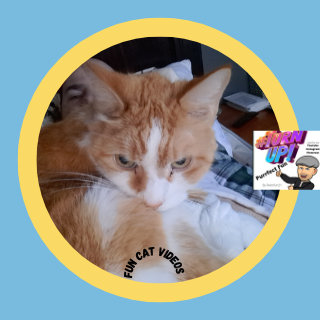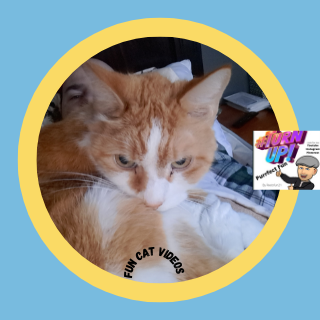When a mama cat goes through an emergency C-section and spay, it can be a life-saving procedure—but it also comes with challenges. From pain management to milk production, caregivers play a crucial role in ensuring a smooth recovery.
In this post, we’ll cover everything you need to know about caring for a cat after a C-section and spay, including common concerns, potential complications, and how to best support mama and her kittens.
We’ll also share more of Skipper’s incredible story—a mama cat who survived an emergency C-section, losing five kittens but saving one, all thanks to quick action.
What Happens When a Cat Gets a C-Section & Spay?
A C-section (cesarean section) is performed when a cat is unable to deliver her kittens naturally. If there are dead kittens blocking labor, an emergency C-section may be the only way to save the mother and any surviving babies.
This was the case with Skipper, as told in our last post. She had been trying to deliver her first baby for hours. We found out later that baby along with a few others were all dead, and blocking the live babies from coming out.
Sometimes, vets will spay the cat during the C-section to prevent future pregnancies and reduce health risks. While this is beneficial long-term, it also requires extra care during recovery.
Post-Surgery Recovery: What to Expect
Mama cat will need plenty of rest, a stress-free environment, and close monitoring. Here’s what you should expect in the first few days after surgery:
1. Pain & Discomfort
- Your cat may be groggy and lethargic for the first 24-48 hours due to anesthesia.
- Mild discomfort is normal, but excessive pain, vocalization, or restlessness could indicate a problem.
- Your vet may prescribe pain medication—never give human pain meds, as they can be toxic to cats.
2. Milk Production & Nursing
Many caregivers worry: Can a cat still produce milk after being spayed? Yes! If she was already lactating, the hormonal signals will keep milk production going. However, you should watch for:
- Low milk supply – If kittens aren’t gaining weight, you may need to supplement with kitten formula.
- Mastitis (mammary gland infection) – Signs include red, swollen, or painful nipples. Affected glands may feel hot or firm.
- Rejection of kittens – If the mother is weak or in pain, she might not care for her babies properly. Ensure they are nursing and staying warm.
3. Incision Care & Healing
- Check the surgical incision twice daily for redness, swelling, or discharge.
- Prevent excessive licking—an e-collar or a soft recovery suit may be needed.
- Keep her indoors and limit movement for at least 10-14 days to avoid complications.
4. Energy Levels & Appetite
- Loss of appetite is common after surgery but should improve within 24 hours. Offer her high-protein, calorie-rich food to support healing and milk production.
- If she refuses to eat for more than 24 hours, call your vet.
5. Emotional & Behavioral Changes
- Some mama cats become extra protective of their kittens, while others may be disoriented or withdrawn due to anesthesia.
- Provide a calm, quiet space for her to recover but monitor for unusual behavior such as aggression or complete disinterest in her kittens. In Skipper's case recovery went well, and if you knew her, you wouldn't be surprised. As told in our other post, she came to us a wreck, but showed such a positive outlook. After her operation, her behavior was like nothing ever happened, except of course, she now had a baby to look after. It has been almost 2 weeks and the baby is doing great and gaining weight.
This all suggests that both C-section and spay went great, and Skipper had no ill effects as the baby is gaining weight, so no issue with milk supply either.
The Long-Term Benefits of a Spay After a C-Section
While a C-section and spay is a major surgery, it offers lifelong health benefits:
✔️ No more heat cycles (reducing stress and behavioral issues)
✔️ No risk of future pregnancies (eliminating pregnancy complications)
✔️ Lower risk of reproductive diseases like pyometra and ovarian cancer
✔️ Longer, healthier life expectancy
This procedure ensures that mama cat won’t have to go through another difficult labor in the future.
Protocol with kittens and mamas are around 8 or so weeks, mama cat leaves to dry out in preparation for spay. Now that Skipper has been spayed we are hopeful she can stay with her baby until adoption.
Our shelter usually sprays/neuters around 13 weeks, and a week or so after that, the kitten will be ready for adoption. Our hope is mama and child can be adopted together.
Before Skipper can be ready for adoption, she will need medical attention on her tail, and anything else she may need. Until then she is happy being a mama, as she comes running every time baby cries.
Final Thoughts: How You Can Help a Cat Recover After a C-Section & Spay
Caring for a cat after a C-section and spay requires patience, close monitoring, and lots of love. The first two weeks are crucial, so make sure to:
✔️ Provide pain relief as prescribed by your vet
✔️ Monitor her incision and watch for infections
✔️ Ensure kittens are nursing and gaining weight
✔️ Create a calm, safe environment for mama and babies
By being a dedicated caregiver, you can help ensure a smooth recovery and a healthy future for both mama and her kittens. In Skipper's case no meds were required, and after nearly two weeks recovery is going very well.
Have you experienced a C-section with a cat before? Share your thoughts or questions in the comments!







